|
I've always believed in bringing magic into children's lives. I had a very magical childhood, filled with stories of fairies, leprechauns, banshees, gnomes and more. My mother's family were Irish, so I had all of that Celtic magic. My dad's family were much more practical but even my grandmother, who was very straitlaced and rigid, told me stories of fairies. She lived in a big Victorian house in Niantic, Connecticut. I lost a tooth during one visit and put it under my pillow at her house that night. In the morning, I found a quarter, the usual booty for a tooth at that time. As we walked downstairs, she told me that the toothfairies turned all the baby teeth into pearls that they strung and wore around their necks when they went out, and if I looked under the carpeting at the bottom of the stairs, I might find some. Sure enough, there were a couple of tiny pearls under that rug. Every visit, I would look for pearls. Sometimes there were none, but every once in a while, I would find one or two. I'm sure they were from a broken necklace in the past, but to me they were left by the fairies.
When my children were young, I told them the fairy stories I had learned and created some of my own to explain natural phenomena. When we would pass by a lake or pond with wisps of fog still lingering on the surface, I would say that they were the fairies dancing on the water. One particularly foggy morning, one of my sons declared that the fairies must be having a huge party that day because we couldn't even see the surface. Ever since I moved into this home, I've had a fairy garden every year. It gets shaded by the leaves of the apple trees in the summer, so there are snowdrops that bloom in the early spring, columbine that bloom a little later and shade-loving annuals like begonias and impatiens in the summer. There is also a trillium plant and a jack-in-the-pulpit that have decided they like to be near the fairies. It's fun for the younger set to look for the fairies and see the changes each year. Sometimes I hide a gnome or two that they have to look for, which is a fun way of teaching them to be aware of their environment. Occasionally the fairies move around too, reinforcing that awareness. This year, they have glow-in-the-dark paths to their little houses so they can find their way late at night, and the woodland gnomes have taken up residence near our front door. I know that a lot of people have trouble with the Santa Claus myth, but for me it was more magic. Every Christmas Eve, my parents would wake us at midnight to the sound of sleigh bells and, "Ho, Ho, Ho! Merry Christmas." We would rush to the window and look for Santa's sleigh in the sky. There were a couple of times when I swore, I could see it flying away in the distance. I don't celebrate Christmas as an adult, but still maintain the magic of the season with the Snow Fairies during the Winter Solstice because I think magic is an important component of a child's life. It's a good way to encourage and nurture imagination. This doesn't have to be done with holidays but can just be a part of everyday life. You can build fairy houses in the yard, leaving edible things that the animals (or fairies) will take. You can point out the fairies dancing on the water or look for woodland spirits in the bark of the trees. I will be taking a break from this blog until June. I am going to China to teach music in two bilingual preschools, including teaching the teachers and parents about music development in young children. I need these next couple of weeks to prepare for my trip, and then I will be out of the country. For those of you who would like to follow my travels, I will be posting an online travelogue on the other blog page. I leave on May 10th. Meanwhile, please send me topics you would like me to address here for when I return.
0 Comments
I’m still thinking about spring and spring related things to do with kids. Now is a great time to start seeds. Marigolds and radishes are easy and fun with seeds big enough for even tiny fingers. When my kids were young, I would have them plant in eggshells. Then when it’s time to transplant outside, you can just crumble the bottom lightly, and the shells also help the soil. I always encouraged my kids to have their own little gardens. I never directed them much but gave help when asked. My daughter wasn’t much into it, but the boys loved it. I also taught them to weed at an early age. I would show them specific plants that weren’t welcome in the gardens and have them root them out. Kids love to have jobs to do. It makes them feel important and included. One time my husband at the time sent a passel of kids outside to pick dandelions. He offered a penny for each one. The truth is that he didn’t want to go out and mow the lawn and, although the grass was not terribly tall, the neighbors were starting to be upset about the dandelions.
With very young children, I like to pick a couple of flowers that I consistently point out so that they learn their names and can identify them on their own. Repetition is the best teacher for children. I pick a couple for each growing phase. Right now, it’s daffodils. They are everywhere and so brightly colored. They’re easy to spot. In a little while, the violets and the dandelions will come out, and I will teach them that they are edible. My rule with edible plants is, even if you’re sure you know what they are, you have to check with a grown-up first. It’s always better to be safe than sorry. There is so many plants just waking up right now. Go outside with your children and look for buds on the trees. Explain to them what will be happening and keep checking on them for those changes. Look up in the trees now, before the leaves come out, and see if you can find bird and squirrel nests. Smell the aromas around you, the damp dirt, the blossoms as they bloom, the freshness in the breeze. Listen to all the wonderful sounds, the birds, the frogs, the returning geese and the wind in the trees. Go for walks as often as you can, looking for changes. Those changes happen quickly this time of year. The photo above is of one of my grandsons fishing in our vernal pool. It was a toy fishing pole with no hook or bait. I’m sure there were no fish in the pool anyway. He had a grand time, throwing the line into the water over and over again, not caring whether or not he caught anything. He was just enjoying the moment. That’s what spring is about for me, enjoying these brief moments to their fullest. I have always been comforted by sound. This time of year, it is especially alluring. Last night, I came home and stood outside for quite a long time listening to the sound of the birds and the haunting sound of the peepers from the pond across the road. I even took out my phone and recorded it so I could listen again later. As I stood there, I could hear turkeys, the returning geese, the variety of frogs and insects and the symphony of birds. It reminded me that I used to bring my children and grandchildren outside at dusk to listen. "How many different sounds can you hear?" I would ask them. I would also point out the more obvious ones, but I wanted them to pick out all fo the differences for themselves. If they said, "I hear birds," I would ask, "What kind of bird sound?"
I think it's easy to forget that there is music all around us, and not only in nature. I once had a couple of friends in a band that played "Industrial Noise." There is music in the sound of traffic, in the airplanes and jets flying by, in the sirens and even in the voices of the people in the cities. How often do we notice that constant music? We want our children to be aware of their surroundings, so why not point out the sounds as well as the sights. And, while we're at it, why not the smells? I remember taking my spice jars and holding them up to my babies noses so they could have that sensory experience. I always have hyacinths in my house in the springtime so their amazing aroma fills my environment. There are books with different textures for babies to feel, even scratch and sniff books, and there are books that have noises to go with them. That's because the authors recognize that children thrive on a variety of experiences. They are like sponges soaking up every experience and learning every moment. When you go for a walk with your children, whether in the city, suburb or out in the country, point out the sights, smells and sounds. They will quickly catch on and start pointing them out to you. I've often found that the kids I'm with, who are used to doing that, find new things before I do and revel in sharing them with me. Some of the sounds only last for a short while in the spring, so be sure to go out and enjoy these wonderful discoveries while you can. https://photos.google.com/share/AF1QipNVFUD9Uy9cFF_E8_B7LvDiD7cLdVMIASSnr39sIjm5Iyd0YwUMc1ntP7EomFolEw/photo/AF1QipOGWauJklVquj9j3Oph7sz_Du29u2FSI8815_ml?key=cm1lbjJQR3RFbGtMRm9QelN5TFJ1Z0FuNGNzLVVn As my thoughts turn to spring with its warmer weather and more time outdoors, I start to think about the activities my children and I enjoyed the most. My two sons and my granddaughter loved hiking in the woods. Although, my daughter always loved walking and walked early and well, she hated the woods. She often didn’t want to go outdoors at all unless we were actually going somewhere, even if it was a random walk. I remember locking her go outside with a bag full of books. If I didn’t lock the door, she would sneak back in as soon as my back was turned. But the others loved it! Even babies benefit from being outside. I remember taking one of my grandsons outdoors when he was fussy because he would always stop crying and gaze up at the big maple tree with it's canopy of green leaves. It worked everytime.
There are lots of wonderful hiking places in our area for kids of all ages. My favorite go-to hiking spot for very young kids is Five Rivers Environmental Education Center which has hikes of different levels of difficulty and a fun nature center. Thatcher Park is the same. Although the Indian Ladder Trail is too difficult for the very young, we always loved going to the Knowles Flats picnic area and looking for fossils in and along the stream. The Emma Treadwell Nature Center is close by as is Thompson’s Lake, if you’re interested in swimming or camping. Christman Sanctuary in Duanesburg is another fun place but also a little difficult for the very young. I couldn’t possibly name all of the wonderful places to hike near the bigger cities. That’s one of the things I love about this area. Although, I lived in the country for quite a while when my children were young, I still took them to these places. There are well-marked trails, and you can often get trail guides to educate or just for fun. Soon, you’ll be able to see and hear frogs of all kinds, see the animals coming out of hibernation, the birds building their nests and the geese returning to the north. I always loved making my own nature scavenger hunts for the kids. They had so much fun, and it honed their observational skills. I chose simple things at first like a squirrel, chipmunk, robin, a feather, a pinecone, acorn or an early wildflower, maybe even a footprint in the mud. As they get better at it, you can step it up and ask them to find a mushroom, a nest in a tree, frog eggs in a pond, signs of a snake. I often find photos of the things I want them to find and print them out on one sheet to check off as we find them. There is so much out there to see and hear. I’ve also made up audible scavenger hunts. What sounds do they hear? A bird song? A goose? A frog? A plane flying overhead or the sound of traffic in the distance? The more we turn these outdoor adventures into fun, the less afraid they often are of harmless wildlife like spiders or snakes. Mud season is a great time to look for animal tracks. Be sure you wear good mud boots if you go out in the spring, though. If you are living in the city, it’s easy to forget that the woods take longer to warm up and dry out. I have made that mistake myself. It’s also often cooler in the woods, so be prepared. Preparation is key to taking young people out into the woods anyway. I always have water and snacks with me. Oranges are a great refreshing hiking snack. I also have some kind of wash cloth or wipes, just in case. Sweaters or jackets can be worn around the waist if you are too warm, but if you don’t have them, it can end a wonderful time very quickly. My kids were never very patient about discomfort, and who can blame them? It’s also fun to bring an inexpensive camera for your kids to use themselves. There’s nothing like a child’s perspective. Although you’re not supposed to take anything out of the woods in a State Park, my kids would often pick up a pretty rock, pinecone or acorns. Rather than finding them in their pockets later, I always brought along a small bag, just in case. You’ll figure all of this out as you go along, just like I did. The main thing is to just get out and enjoy nature. It’s healthy, makes them more aware of their surroundings and, it’s a great way to keep your kids away from their screens. Let me know some of your favorite hiking spots in the Capital Region. A while ago, I wrote a blog piece about the importance of paying attention to your child. The inspiration for that post came from an article about distracted parenting and the rise of childhood accidents due to cell phone use. It’s still a very important thing for all of us to think about. Children crave our attention and notice when we’re not paying attention to them. We don’t want them to be glued to their devices, so we should not be modeling that. However, there is another side to the issue of attention. Some of us pay too much attention to our children, not allowing them to have lives of their own to develop their own sense of safety and their own likes and dislikes. This has been referred to as “helicopter parenting.” I only heard this term recently, but it resonated with me fully. My own mother was a helicopter parent. She hovered over me, choosing my clothes, my hobbies and even my friends. The only time I could get away from her was when I played outside or when I went to school. Even when I played outside, she would sometimes come out and direct the games with the neighborhood kids, which for me was humiliating. I didn’t mind having involved parents and felt lucky in some ways, but she went overboard. I wasn’t made to do chores because I didn’t do them exactly the right way. Homework was always supervised, so I stopped bringing it home. As I grew older, I resented her constant intervention and rebelled whenever and wherever I could. My mom and I fought constantly. I’ve always felt sorry that we couldn’t figure out how to find a common ground or make some kind of compromise. The harm that was done to me as a result was huge. I moved out on my own not knowing how to take care of myself or even how to do simple tasks such as doing my laundry, keeping my house tidy and clean or shopping for my own food. I floundered with fashion, wearing outrageous outfits that I should have experimented with as a child. I bought too much of one kind of food and not enough of another. I didn’t know how to budget money because I never had any of my own and was not allowed to work, even as a teenager, except for a rare babysitting job. I found myself in dangerous compromising situations because I’d never honed my own sense of danger. My mother was the child of an alcoholic, and I now realize that her control issues were a symptom of feeling out-of-control as a child. It is a common occurrence in adult children of alcoholics. Although I finally understood my mom’s motivations, that understanding didn’t help me to be able to function any easier. As a result, I determined to teach my own children self-reliance. There were times when I probably went a little overboard, like when I insisted that my 3-year old daughter go up to the fast food counter to ask for her own ketchup. But I meant well. And, I’m sure, so did my mother. One of the things I think I did right was in not assisting my children to climb something they couldn’t reach on their own. If they had to get themselves into a tree or climbing structure by themselves, I felt that they would have a better sense of their safety, and I saw that work time after time. If they could get up, they were always able to get down and didn’t freeze out of fear. I would watch other children be boosted into something they wanted to climb, and either be afraid because they went too high and had to be helped back down, would start crying for help almost immediately because they were unsure of themselves, or they would slip and fall because they had a false sense of security. I also made sure that my kids always had their own money to do with what they wanted. Their money was not tied to chores. They got an allowance because they were a part of the family. Their allowance was half their age. They sometimes asked for advice on what to do with it, but I never volunteered that information on my own. All three of them handle money differently as adults. My youngest is much better than anyone else in the family about money, and I take no credit for that. The credit goes to him and what he figured out for himself. However, unlike him, my two older children grew up during a time when their dad and I were below the poverty level, so they sometimes felt deprived which I know affected the way they dealt with finances. When my children were babies, I was overwhelmed with making money and keeping up a household. I didn’t spend every minute observing them. I kept my eye on them, but they had time on their own, too. If I needed to take a shower, I would put them in their crib to play. If I was doing dishes or laundry, I would put up a baby gate so that they could hear and see me but not be underfoot or getting into trouble. They learned to occupy themselves. This is an important skill for all of us to develop. In this age of televisions in every house, cell phones and other electronic devices, children are needing to be entertained every minute, or they are bored to tears. Most of us have known “only” children who are demanding and selfish. They’re not born that way. It’s learned behavior for them because their parents cater to their every whim. I’m sure I did that with my first child for a while. How could we not? They are everything to us, and of course we want them to be happy. However, once a sibling comes along, there’s another child that gets tossed into the mix, and everything changes. We are forced to alter our parenting to accommodate two. Suddenly, the first child might have to wait to have that book read. They might not get to go for a walk when they want because their younger sibling is napping. Or, maybe they can’t be as loud for fear that they’ll wake the baby. Parents often feel guilty, but we have to realize that it’s the natural course of things. Our children need to feel disappointment. They need to learn to wait and accept the fact that they may not get everything they want when they want it because the rest of the world will probably not be as accommodating as their parents, and shouldn’t they learn that while they’re young? This doesn’t mean that we don’t still try to make our children happy. Of course, we should play with them, read to them, sing with them, take them on outings and cuddle them. It just means that we need to temper that with our own needs. Our children learn about life from us. We are teaching them about love and relationships, including self-love. I’ve had musician friends who have given up their instruments because their children didn’t like it when they played. What is that teaching them? I’ve had other musician friends who ignored their children when playing their instruments, and what is that teaching them? The biggest lesson here is one of balance. When I’m playing a song or talking to someone and my child or grandchild wants my attention, I ask them to wait a minute. When the song is over, or the conversation is paused, I respond to what they want. If it’s something that’s really important, I stop what I’m doing and attend to it. If they’re asking because they’re bored or jealous of me not giving them my undivided attention, I remind them that I’m doing what I love and invite them to join in or wait until I’m finished. I never make them wait too long because I want them to learn that I will be there for them but also get to enjoy what I love. In doing that, I’m teaching them that we are all equally important. Automatic self-sacrifice in every situation is not necessarily a lesson I want them to learn. My own parents were very affectionate with each other. They danced together, hugged and cuddled. I grew up seeing that as natural. After all, I was a product of that love. Did I feel jealous when I saw my mom sitting on my dad’s lap? Sure, I did. Did she hop off because of that? Certainly not. They explained that they loved each other just as they loved me, and I would get my turn. That’s what it all boils down to … taking turns and sharing. And, it’s not just about sharing toys but sharing time and affection, too. Ultimately, parents know best how to raise their own children, but sometimes it's helpful to have a different perspective. I know it was always helpful to me. No one can tell us if we are doing right or wrong. We all have to judge for ourselves. We each know our own children and situations, and this topic is a tricky one. Once again, it's all about balance.  As I was adjusting my rear view mirror in my car the other day, I started thinking about parenting hacks. I realized that my mirror is adjusted backwards to how most people have theirs. Mine points down when I switch it, instead of up. The reason for this is that I have had children riding in the back seat of my car for so long. When my mirror is adjusted that way, it only takes one little click to be able to see what's happening in the back. There's no need to turn around while I'm trying to keep my eyes on the road. I could just glance in the mirror. It also helps keep the chaos down to a minimum because they know I can see them whenever I want. Another hack I used was to wear overalls with a hammer loop on the side. When my daughter was 3 and my son was a newborn, I had no car and walked everywhere. Although the baby was in a pack, I still often needed both hands free for carrying things, so my daughter learned to hold on to the hammer loop instead of holding my hand. I also had safety pins on my belt loops, just in case, and always had some kind of toys and snacks in my backpack to ward off tantrums. We often went out as a family to after-dark parties or other events such as music festivals. I fell in love with glow sticks and light-up sneakers. They were lifesavers. In their light-up shoes, I could always see where my children were. I would have them draped in glowsticks as well, but they also lined our blanket so the kids could wander a bit and still find us in the dark, and we practiced going back to our spot until they were confident. I even floated glowsticks in a bath one especially rough and whiney night and turned out all of the lights, creating a magical glowing bath and saving the day. When my oldest son was just starting to walk, he loved to wander off. That boy was an escape artist, climbing under and over everything in his way. It was becoming increasingly difficult to contain him, and I was too busy to hover over him constantly. I also believed in letting my children have a little autonomy as a learning tool. I believe that if we are constantly there, protecting them and paving their way, they won't be self-sufficient. They need to have scrapes and bruises occasionally to learn. I didn't neglect them, but they had times when I wasn't watching. The house was childproofed to afford them that luxury. But my boy was a wild child. I attached bells to his shoes and his clothes so that I could hear wherever he went. Occasionally, when the sound of the bells stopped, I knew he had removed his clothes and was probably getting into some terrible mischief. That was a very useful hack. I was able to be in the kitchen or bathroom without having to cart him around with me. I'm sure there are more that I've forgotten over the years. I was always trying to think of new ways to make my parenting life easier. I'd love to know what your parenting hacks are. Please share them for all of us to see. Remember, we're all in this together with no manual to refer to when we're struggling. I was chatting with a couple of moms after music class this week, and the topic came up of how to deal with well-meaning grandparents who spoil your child. The simple straight-forward answer is, “Just talk to them about it, setting your limits clearly.” However, that’s not always as easy as it may sound. We adults often dance around what we want to say without being clear out of fear of offending the other person. Or sometimes, it’s the receiver who takes what’s said as an attack rather than a request for support. We could learn a lot from our children who often blurt out whatever is on their minds without much thought to how the other person will react.
Grandparents don’t have to be with your child every day, setting and enforcing limits. They already did that with their own children and want to enjoy being the “good guy” for a change. They want to be able to play without the restrictions of rulemaking. That’s understandable, but they also need to learn how to do that without undermining the parents. As a grandparent, I am much more flexible, patient and playful than I was with my children. I don't have the constraints of day-to-day parenting and the stresses that go along with that. but it’s a delicate balance. If grandparents live a far distance away, I think it’s healthy for them to go overboard during the time they are visiting. However, if they are close by and see your children often, they need to learn to play within the parameters of your household rules. It’s very similar to co-parenting with exes in a divorce. In your own household, you have your own rules. This goes for the grandparents’ houses, too. For example, if they want to let your kids jump on their couch, and it’s not necessarily dangerous, let them. Just make sure your children understand that the rule is different for your couch. The reverse can be true, too. When I had children in my home, I always allowed them to eat in the car. It made my life much easier. Now, I don't allow it anymore. I'm tired of having crumbs and trash in my car. Not that my car is spotless, far from it, but it's no longer filled with old food wrappers, crumbs and bottles. Our priorities change as we age. Then there's the subject of in-laws. This is always such a delicate balance. Most of the time, we don’t want to offend them and certainly want them to like us, and they feel the same way. However, that’s not always the case. Sometimes there are tensions because of jealousy or judgements. These are not easy to navigate but try to keep in mind that your in-laws are your spouse’s family. They raised him or her, and they must have done a good job, or you wouldn’t be with them. Your in-laws may be feeling a great loss or have some other feelings that they don’t feel comfortable sharing with you. The best thing that we can do in those situations is to try to be as accepting as possible and hope they will come around. Sometimes, talking about the issue is the best way to clear the air. At least you know where you stand instead of guessing. Communication is always the best way to go when there are issues around our children, whether it’s with our spouses, parents or in-laws. We will never move forward without talking things through. Resentments will build, often until they feel insurmountable. I have had wonderful conversations with my parents, in-laws and spouse and may have had an equal number of falling outs with them as well. Regardless of the circumstances, in one way or another, the outcome was always beneficial to the children involved. I’ve had to learn to speak out and also to listen openly without letting my feelings get in the way. As an older person, it’s sometimes difficult for me to sit back and listen. I’ve waited a long time to be an elder. I am now in the time of life for sharing my wisdom, and I sometimes resent younger folks trying to "teach" me or share their wisdom. I can't count the number of times i have felt like saying (or have said), "Wait your turn. You're young. Your time will come." But I’ve learned a lot from listening to my children and respecting their experience as parents. I've learned a lot from my students and from people of all ages. We’re never too old to learn. I think most of the difficulty comes in the presentation, not the substance. 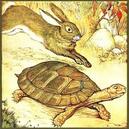 I’ve been writing a series of blog posts about my experiences as a young hippie mother in the mid-70s, and it made me realize again how important our stories are to our children and grandchildren. I often lament the fact that I didn’t record the stories my mom and dad told. I remember some of them but not nearly enough to satisfy me. I have to admit that many of the stories from my younger days are not appropriate for younger children to read. I’d rather not give them any ideas. But there are plenty that are fine to tell, especially ones from when I was the same age as they are now. When my children were at certain ages, I thought a lot about my life at that age. So, why not tell them those stories? We should share the stupid things we did, the mistakes we made, the times we were heroic and the times we were cowards. It’s important for our kids to see us as human and not superheroes. When we look perfect, it sometimes feels too hard for them to live up to that height. I remember my daughter saying to me, when she was a young mom, that she didn’t think she could ever be as good a mom as I was. That made me feel so sad, and I started sharing my failures with her. As a teacher in The Albany Free School, when talking to a student who had done something wrong, I would always share similar things that I had done wrong. I was not bad at the time, just making a mistake, the same as them. It’s important for children to know that we all make terrible mistakes sometimes, but we can change our ways and even atone for our transgressions if necessary. There’s always room for change. There are funny stories and tragic stories. I have told my children and grandchildren about the time I stood up for a friend and was beaten up by a girl gang for it. Those girls kept after me, causing me to hide out. Later, my mother, who knew the leader’s deceased mother was very friendly with this nemesis of mine, causing me to feel very angry and betrayed by my own mom. What I soon learned was that my mother’s kindness to this very hurt girl caused her to look at me in a different way, and I was never bothered again by her. I learned a lesson that I could then pass on to my own kids and grandkids through an interesting story. We all have our own stories and our own lessons learned. We often try to tell our kids to behave a certain way because we’ve already learned that lesson, so they don’t have to go through it again. But if we don’t then tell them the story, they probably won’t listen. In storytelling, they are entertained, and the lesson sticks. Think of Aesop's fables. How many of us remember those stories and the morals at the end? I know I remember many of them. “Slow and steady wins the race.” “Look before you leap.” “Birds of a feather flock together.” “Count not your chickens before they are hatched.” And the list goes on and on. Why do we remember them? Because they had stories to lead in to those important lessons. So, please keep telling your stories, even the ugly ones. My daughter suggested that I write a post about the importance of introducing your children to a diverse group of people. I hadn’t much thought about the effect our diverse group of friends and acquaintances had on her childhood until then. She explained to me that it was one of the most important things that made her accepting of all kinds of people. She grew up in a very unusual environment, being exposed to lots of hippies but also homeless folks, tons of musicians and artists and people from many cultures and sexual orientations. Looking back on it, I see how that shaped her perspectives on the world, and I wish more people had those experiences.
There was recently a Drag Queen story hour at one of our local libraries. I have no young children in my home anymore and didn’t go, but I would have taken my kids to it. In my daughter’s town of Greenville, North Carolina, there was a huge uproar when they held the same type of event. I don’t understand why people who were opposed to it, felt as though they needed to get so upset. Just don’t bring your children. But, there were enough threats made that they had to have police protection. We have entered a new phase in our country, one of acceptance but also one of violent rejection. The best way to push back against the negativity is to support and celebrate the differences around us. People are finally feeling safe enough to come out of the closet, lots of different closets. I always encourage parents in my music classes to expose their children to a wide range of musical styles because we have no idea what they will end up liking. We don’t want them to rebel against the things we love, so we encourage them to hear everything. I’ve met young children whose parents don’t listen to classical music, but that is what they ended up loving. I was raised Catholic and, like so many others, I turned my back on the Catholic Church, never looking back. I introduced my own children to a wide variety of religions, encouraging them to choose for themselves what made the most sense in their spiritual lives. Shouldn’t we be doing the same thing with lifestyle choices? We can’t change who our children are born to be, and we don’t necessarily know what that is right away. If we raise them in a static environment and they don’t fit into that mold, they will end up feeling lost. I know that I did, and it took me a long time to find my rightful place in the world. Let’s do our children a huge favor and show them their limitless possibilities without encouraging or discouraging any specific road. I often start my posts with the phrase, “This is such an important topic.” And, I suppose they all are. This is one I’ve struggled with for a long time both as a mother, a teacher and as an adult dealing with other adults who never learned this important lesson. I once had a close male friend who always stood too close making everyone uncomfortable. We were at a party once, and he came in way too close pinning me up against a wall. I pushed him back forcefully and drew an imaginary line around myself. I said, "You are not allowed to go beyond this line without my permission! Understand?" The people in the room applauded and hooted approval. I was sorry that I had embarrassed him but glad that the issue never came up again.
We want our children to be loving and physically affectionate, but we also want them to be respectful and aware. When my own children were babies, I noticed that our cats and dogs had a great sense of this. I worked hard at teaching my kids to be respectful of the animals, but I didn’t hover over them watching every move. My pets tolerated a lot from the babies until they started walking. Once they were on their feet, all bets were off. The cats gave a warning first by hissing then, if the warning went unheeded, they scratched. They didn’t seriously injure the kids, they just let them know that they needed their space. My dogs never bit my kids but did growl and bare their teeth occasionally. One of them even nipped my son slightly when he poked her in the eye with a toy after many warnings. Although I always tried to prevent things from going that far, I learned that sometimes experience is the best teacher. I teach families with children that range in age from infancy up to and including 4-years old. The older ones are always interested in the babies. Of course, why wouldn’t they be? They’re like living, breathing dolls. However, they are sentient beings with feelings, taking in everything around them. I always try to encourage parents of babies to ensure their babies’ enjoyment by protecting them from well-meaning “smotherers”. We all know these children. They’re the ones who want to love you so much that they are right in your face, hugging, touching and preventing any stimulus from anywhere else. These children mean well. They are doing it out of a place of love and wonderment, but they are doing the baby a huge disservice. When encountering this behavior in class, I try to gently talk to the older child explaining that I want the baby to be able to enjoy the class in his or her own way. I tell them, not in these words, that they get to show the baby how to do the activities by participating rather than loving them to death. That doesn’t always work. Then I have to turn to both sets of parents and get them on board. It seems to me that this should be instinctual, but I’ve realized that we all behave differently in public. As a parent, I was often worried about the judgement of other parents, never sure if I was doing the job right and often worried that I was overstepping my bounds with someone else’s child. We can teach our children to ask for hugs instead of expecting that everyone is willing. We can teach them not to touch a baby’s face or grab their hands but touch their feet or gently stroke their legs or tummies instead. Most importantly, we need to teach them to accept no for an answer. And, we need to consistently reinforce these messages. So many things have to start at home. Our babies are learning all the time. They are experimenting with their voices and their bodies. If we laugh at everything they do, even if it could be harmful later on, we’re encouraging that behavior. Some things are very cute when they’re young but not so cute when they get older. If we accept our little one’s hitting when it doesn’t have enough force to hurt, how will they know that it’s not acceptable behavior? If they screech when they’re tiny, they will screech when they’re older. We can gently say, “Ow, that hurts my ears. Can you do it softer?” Then we model that softer tone. You can even whisper, which is a sound most babies love. A young baby may not understand, but we’re still relaying the message. Eventually, it will stick. We can say things like, “Please don’t hit me. Hitting hurts.” “That’s such a tight hug, can you try hugging me a little gentler?” We can use terms such as “soft touch.” I’ve never liked the term “nicely.” It implies that you’re not being nice. Maybe the intention is one of being nice, but there is too much force behind it. If we keep delivering the messages of kindness and respect and model those things ourselves, our children will learn them quickly. I’ve encountered nursing mothers who are reluctant to stop their babies from biting because they don’t want to traumatize them. It hurts when your baby bites you while nursing. With every one of my babies, I sharply and loudly said, “Ouch,” and removed them from my breast immediately. Did they cry? Yes, they did. But I soothed them and explained that it hurt me, and eventually they stopped biting me. I’ve seen mothers with serious cases of mastitis continue to nurse their older children with tears streaming down their faces. That kind of self-sacrifice is detrimental to children. It is not teaching them personal limits. All of us will have disappointments and hurts in our lives. We need not to avoid them but learn how to cope with them and move on. The flip side of this topic is teaching them how to protect their own personal space, how to speak up for themselves and how to recognize their discomfort in situations. This can also be difficult for parents to navigate. We want them to take care of themselves but also need to provide protection where needed. Ideally, a child will ask another child before grabbing them for a hug. This will not always be the case, but it can be taught. Although, I think it’s important for all children to learn to use words to express themselves, sometimes they need to be physical, pushing another child away or wresting free from their grip. Younger children need us to watch and help them where needed. Some kids are biters. These biters always seem to do it when they feel trapped or hemmed in. As a preschool teacher, I often saw a child backed into a corner bite the child that was blocking their way. It wasn’t done out of aggression as much as from panic. Some children struggle with chaos. They will also act out from a sense of panic. They can be taught how to avoid those situations or how to find a way to keep themselves feeling safe in the midst of chaos. This subject is too vast to address everything is this one post. Please ask questions or leave your own thoughts here. I think it’s something that most of us struggle with in one way or another. Every child is different, and we can all help each other. Remember, it really does take a village to raise a child. Listen to other parents and grandparents and ask for their thoughts. It affects all of us in one way or another. |
Archives
April 2019
Categories |

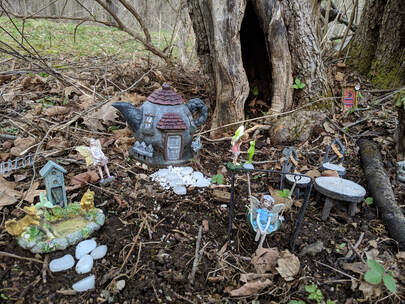
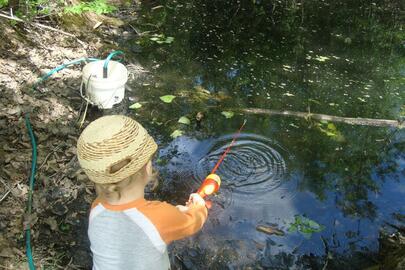
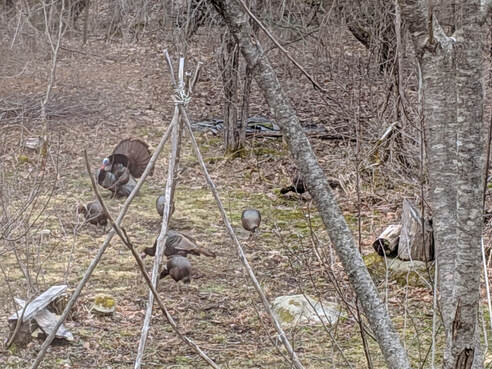
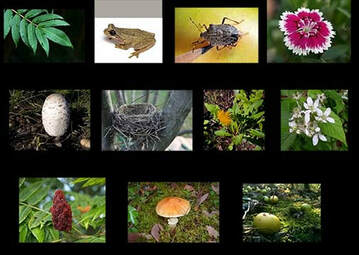
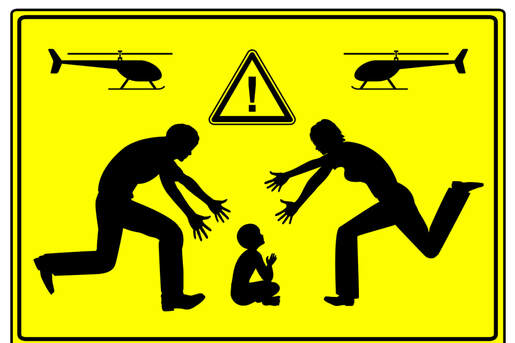
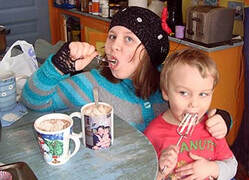

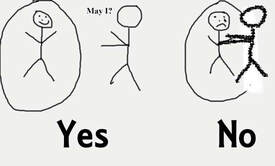
 RSS Feed
RSS Feed